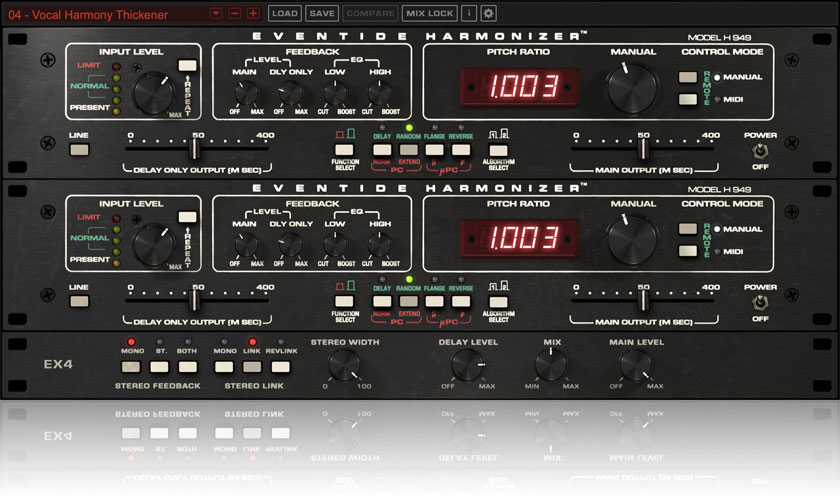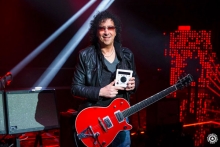

This is the equivalent of recording to tape at one speed and playing back at another speed. Random Access Memory ICs became commercially available and pitch change was made possible by reading the audio from memory (playing back) at a different rate than writing (recording). The Challenge: Pitch Change Without Speed Changeīy 1975, IC technology had sufficiently advanced to the point that it became practical to design a digital pitch change effects box - the H910. However, the interface was not designed to easily dial in pitch-related effects, and there was a technical challenge to overcome. Eventide’s DDL1745M had an optional pitch change module and a handful of studios began to discover digital effects. Prior to its introduction, studios had adopted digital delay as a utilitarian tool to replace the bother of using an expensive tape machine (and salaried tape op) for double tracking and plate reverb pre-delay.

#EVENTIDE H910 JON ANDERSON PRO#
The H910 was arguably the first pro audio digital effects product.


Just three years later, Buys Ballot, a Dutchman, demonstrated the Doppler Effect on sound waves by having six tubas play the same sustained note while perched on the front of a speeding locomotive. In 1842, Christian Doppler suggested that “the observed frequency of a wave depends on the relative speed of the source and the observer.” Doppler was thinking about star light, not sound, but a wave is a wave is a wave. (Kids whirling objects around on a string were not the scientific observers for which one would have hoped.) To notice even a slight pitch change of 2% a sound source with 100% constant pitch would have to be approaching the listener at 15 mph. Why had no one elucidated this effect in our long history? It’s simple few things moved fast enough! Sound travels at ~750 mph. While Pitch Change is naturally occurring, throughout history, humans would rarely have perceived the effect because the sound source must be traveling at a high enough rate of speed relative to the listener to cause a discernible change in pitch. I’m looking forward to next week’s episode, where we can hear not only how your thoughts may have changed since your earlier BG podcast, but how your opinions might reflect my own.There’s a lot of history to cover about the conception and development of the Harmonizer so let’s first consider the underlying principle: the interesting phenomenon known as Pitch Change. Ever since I reacquired this little gem in their catalog, “Final Eyes” has moved up to become one of my favorite Yes songs – and indeed, one of my current most-listened to songs, period. So when people say it’s nothing more than standard 80s arena rock, I’d say that really isn’t the case. I felt, then and now, Yes of the era was a far more cerebral alternative to the likes of Bon Jovi and Poison. I only recently went back and filled in the gaps of my Yes collection, including this one, and was surprised how much I really really enjoyed it – I’d always assumed my enthusiasm for it was just misplaced nostalgia. I hadn’t owned a copy for quite awhile, having convinced myself that I could live with just the tracks on compilations. This was the album Yes had out when I first became interested in Yes – a very odd gateway record into the world of Yes, but one that I fell in love with enough to become a lifelong fan. I was glad to see you revisiting Big Generator.


 0 kommentar(er)
0 kommentar(er)
